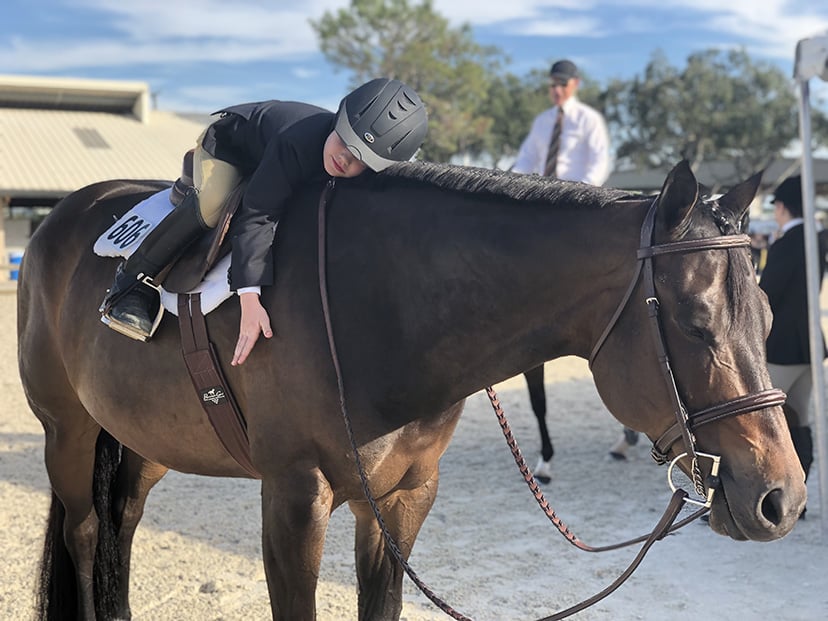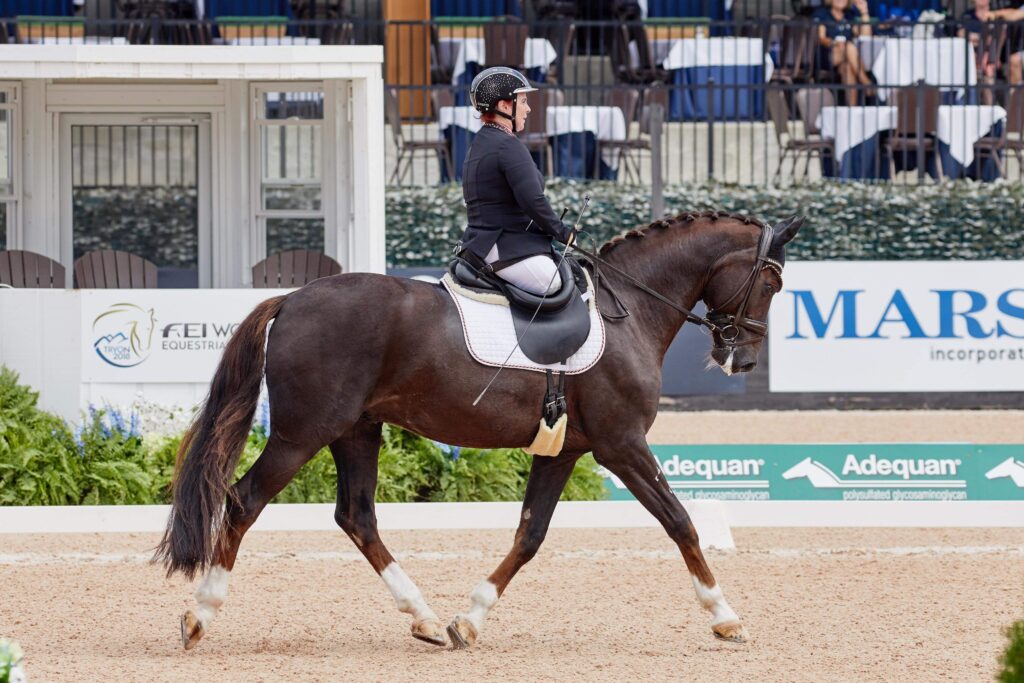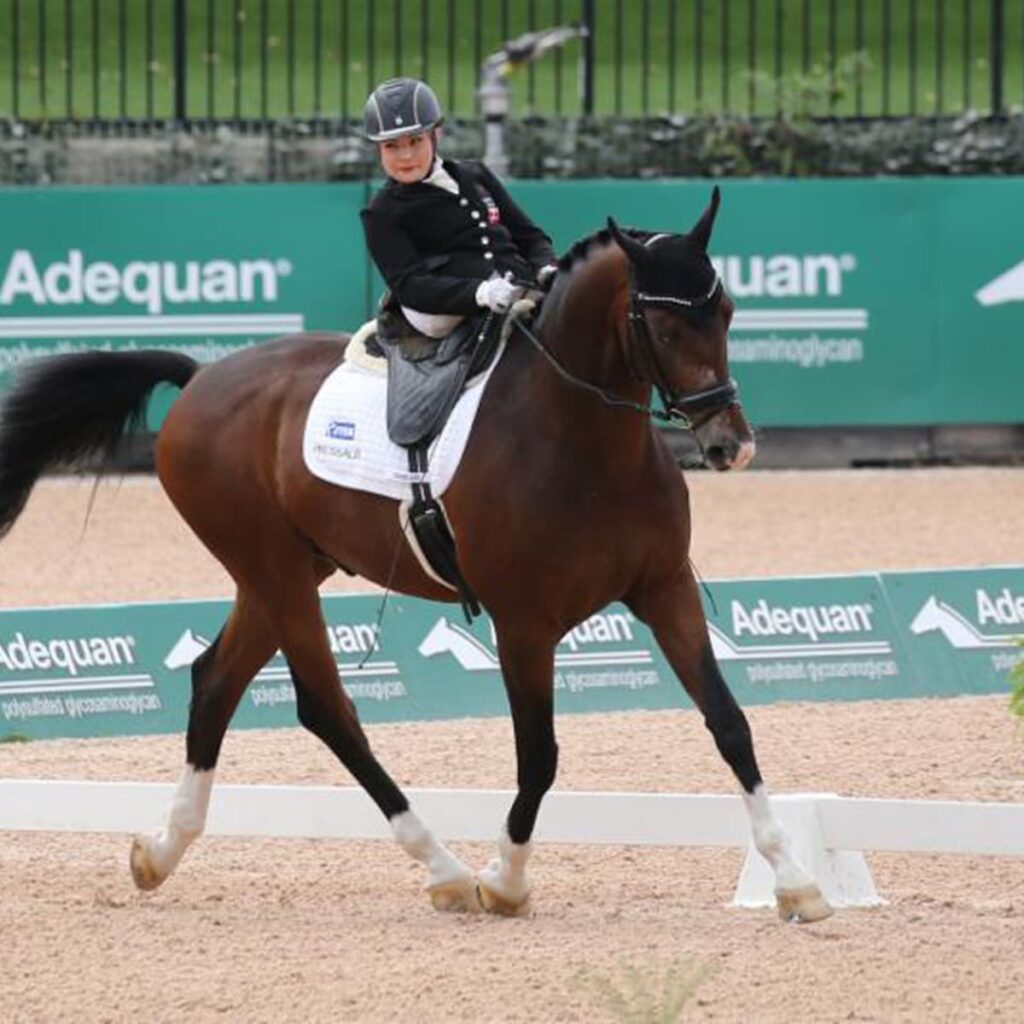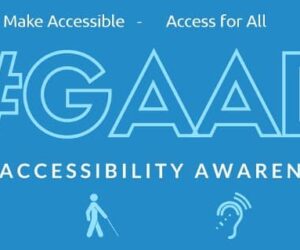Para-Equestrian is one of the para-sports for those who love to ride on a horse. The Equestrian refers to the sport that people sit on horseback or sit on a horse-drawn vehicle and move by horse(s). The horse is an essential part of this sport. Horse riding is an activity that is back to early ages. Still, equestrian first presented as a “military test,” which was to create a competition that officers and horses would test for any challenges that could happen on or off duty. These were the basics for formal training for the next steps and changes.

Equestrian evolved into three distinct disciplines – jumping, dressage, and eventing – at the 1912 Olympics Games in Stockholm, Sweden. Soon it was considered a hobby, sport, and passion for thousands of people around the world. It was developed as a sport for kings and nobles in European nations. Equestrian sport has thrived in a variety of disciplines throughout different countries.
This sport has no age limitations, and kids with ponies or adults with strong horses can participate in this sport. Because of the rehabilitation and recreational nature of Equestrian, it is famous around the world. Because of this sport’s high rate of injury and illness, its assistive devices are such as dressage crops, a connecting rein bar, rubber bands, or other aids. Equestrian has not specified a group of people. It is a popular sport among people with disabilities and impairments too.
Para equestrian is a multi-disability sport for those athletes with physical impairment or visual impairment. This para-sport is governed by the International Federation for Equestrian Sports (FEI) and includes two competitive events:
- Para equestrian dressage
Conducting under the same basic rules as conventional dressage, but with riders divided into different competition grades based on their functional abilities
- Para equestrian driving
Operating under the same basic rules as combined driving but places competitors in various grades based on their functional abilities
The first para-equestrian competition on borrowed horses has held in 1996 Atlanta. The first para-equestrian dressage competition at a Paralympic Games was held in August 1996 at the USA’s Georgia International Horse Park. The sport was divided into four grades (I to IV), and the 61 riders from 16 countries competed on borrowed horses. Para equestrian sport was brought under its umbrella by the FEI in 2006. Riders with physical impairments may compete on the same team as people with vision impairment.

Para-Equestrian impairment eligibility
Based on National Classification Policy 2018, the eligible impairments for taking part in para-equestrian competitions are as follow:
- Impaired muscle power
- Impaired passive range of movement
- Limb deficiency
- Leg length difference
- Short stature
- Hypertonia
- Ataxia
- Athetosis
- Visual impairment
Para-Equestrian Classifications
The classification for this para-sport is based on the degree of physical impairments or visual impairment areas in the following classes:
Para equestrian dressage classification
This classification is defined into five main classes:
Grade I
The rider will ride a walk-only test at this level of classification.
Grade II
The rider will ride walk with some trot work, excluding medium trot at this level.
Grade III
The rider will ride a novice level test excluding canter based on Federation Equestre International definition.
Grade IV
Based on the Federation Equestre International, the rider will ride a novice level test. Athletes with a physical disability or vision impairment. Riders with moderate unilateral impairment, moderate impairment in four limbs, or severe arm impairment.
Grade V
At this level, the rider will ride an elementary/medium level test. Based on the Australian Paralympic Committee definition of this classification, Riders have a physical impairment in one or two limbs (for example, limb loss or limb deficiency) or some degree of visual impairment.
Para equestrian driving classification
This classification includes two mani classes:
Grade I
This classification is for:
- The wheelchair users, on their daily basis, have trunk functionality and impairments in their upper limbs.
- The people who can walk but have impairments in all of their limbs.
- The people with severe arm impairment.
Grade II
This classification refers to the riders are higher functioning than Grade I riders but who would otherwise be at a disadvantage when competing against non-disabled competitors.
Advantages of para-equestrian in brief

Although this para sport is a risky one, full of activities, full of excitement, and speedy, there are hundreds of advantages and benefits:
Physical Advantages
- Sensory integration
- Improved appetite and digestion
- Improved respiration and circulation
- Reduction of abnormal movement patterns
- Decreased spasticity
- Stretching
- Improved coordination
- Strengthened muscles
- Improved balance
Psychological Advantages
- Expansion of the locus of control
- Sense of normality
- Emotional control and self-discipline
- Development of patience
- Improved risk-taking abilities
- Increased interest in one’s own life
- Increased interest in the outside world
- Improved self-confidence
- The general sense of well-being
Social Advantages
- Enjoyment
- Increased experiences
- Development of respect and love for animals
- Making friends and new connections
Educational Advantages
- Remedial Reading
- Remedial Math Counting
- Sequencing, patterning, and motor planning
- Improved eye-hand coordination
- Visual/spatial perception
- Differentiating significant from less significant stimuli in the environment
The other benefits of regular training and practicing of para-equestrian are:
- Learning horse riding and controlling a horse
- Learning advance equestrian and para-equestrian skills and principles
- Learning how to work with teammates
- Increasing the balance, coordination, and self-assurance, strengthening and flexibility
Para equestrian is an exciting sport full of fun and activity, which gives the great feeling of being alive to the rider, no matter the rider’s physical condition. Animals can be the best friends if we know how to connect and treat them. On the other hand, horses are the kind of animals that easily understand feelings and connect with humans if they feel safe and kind. With hundreds of equestrian benefits, why not try it for once if you have physical condition eligibility?



